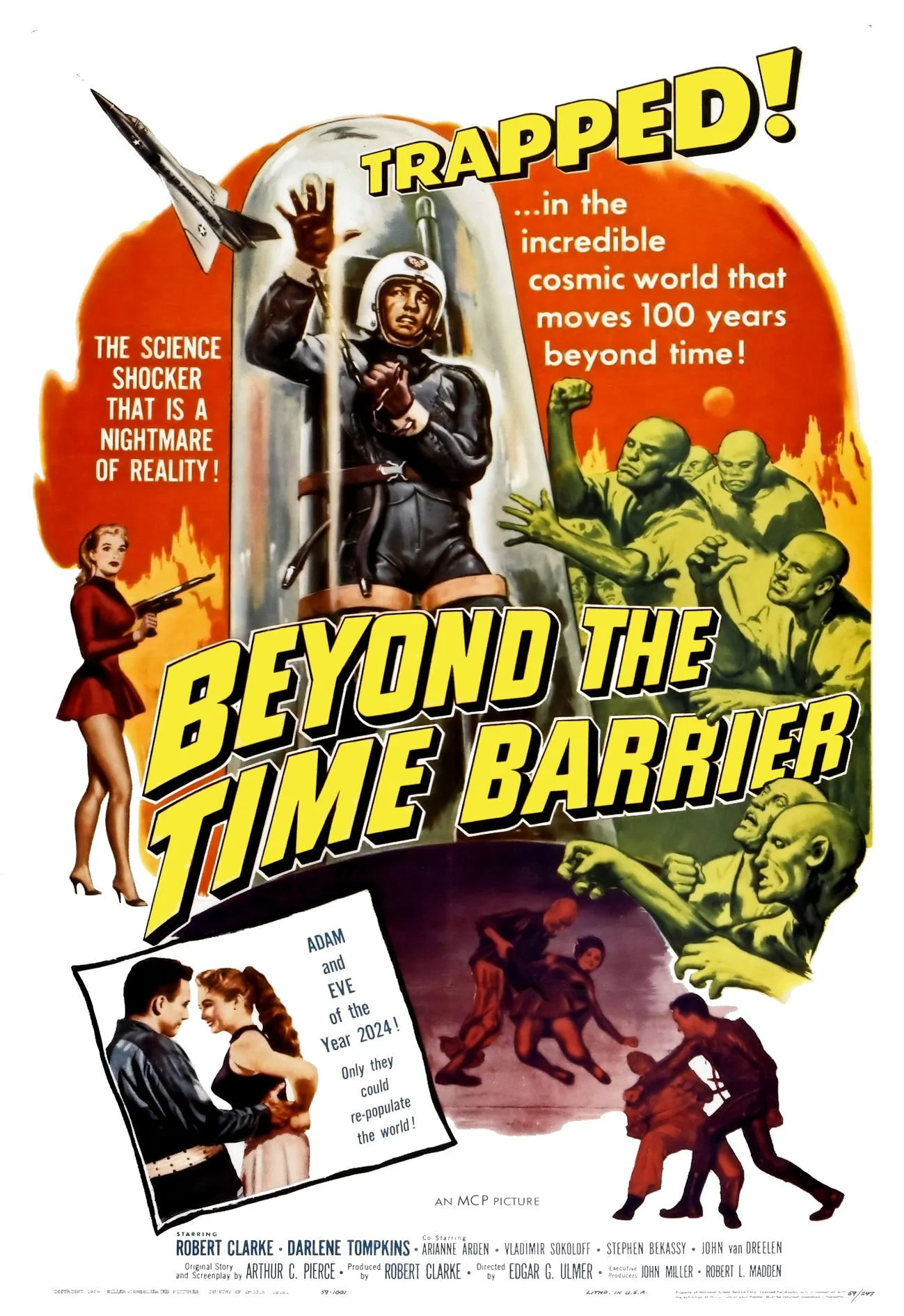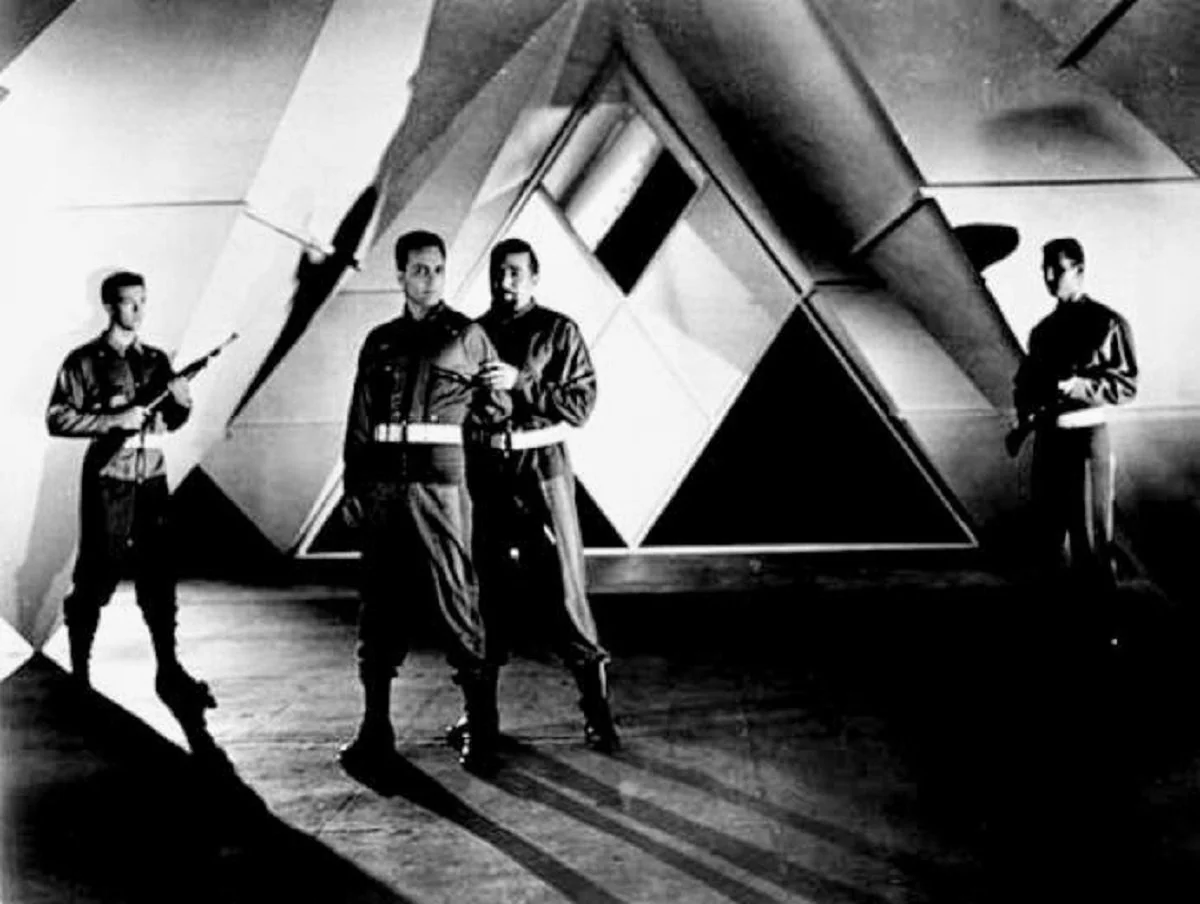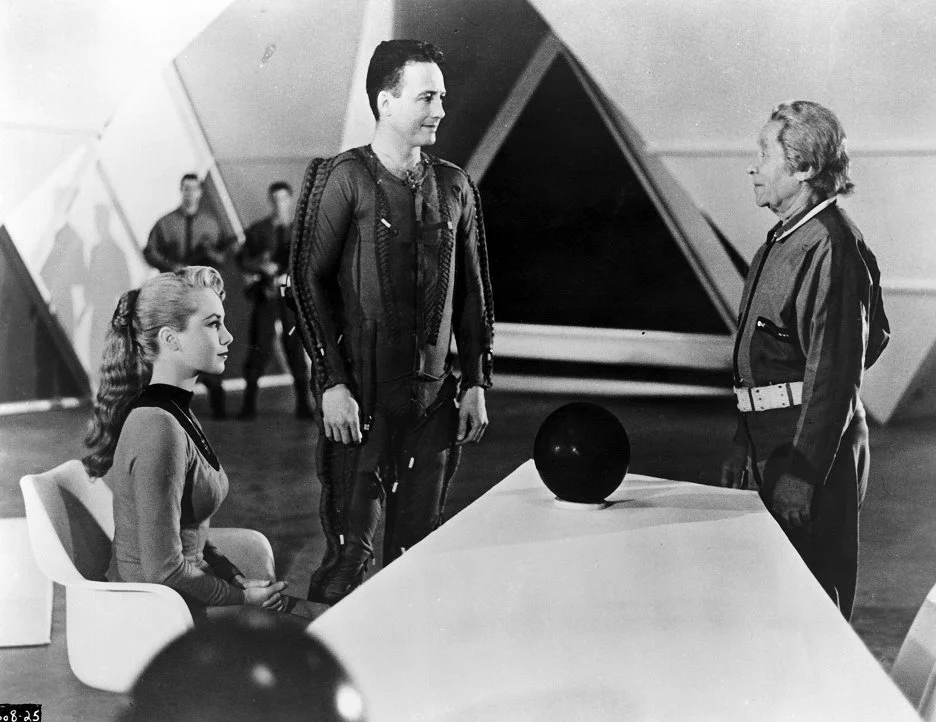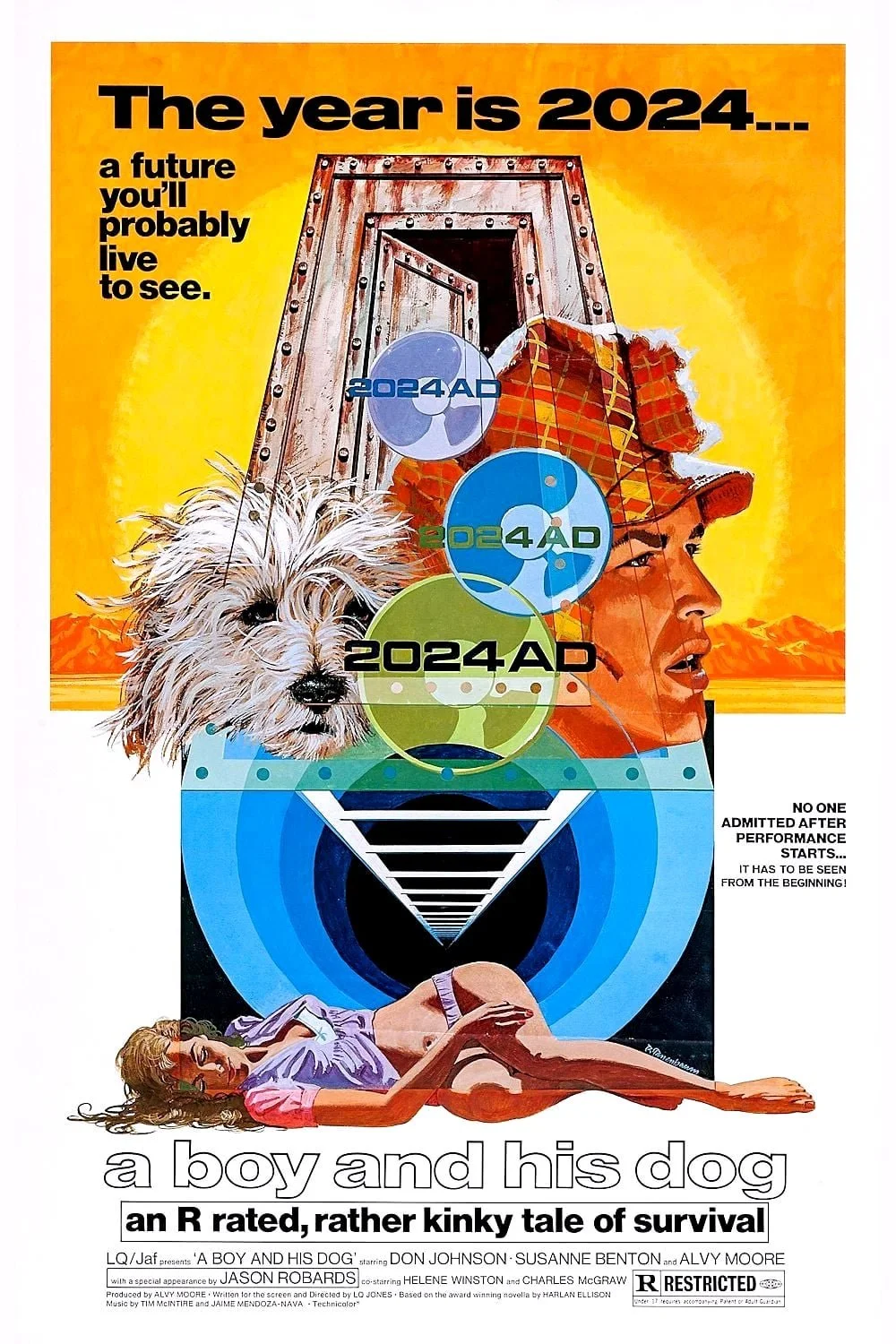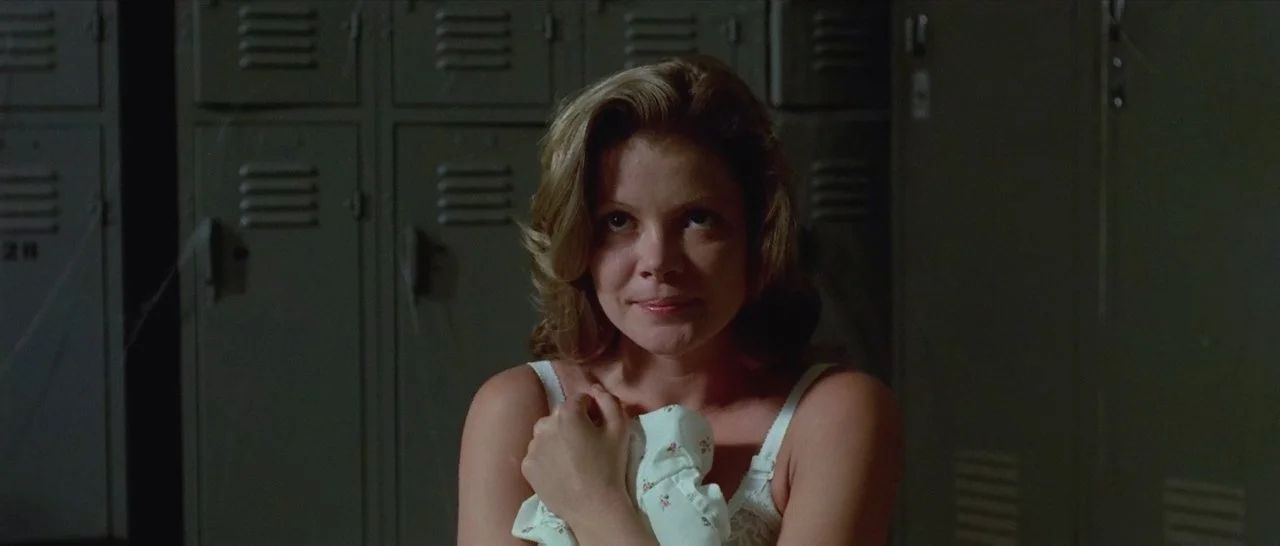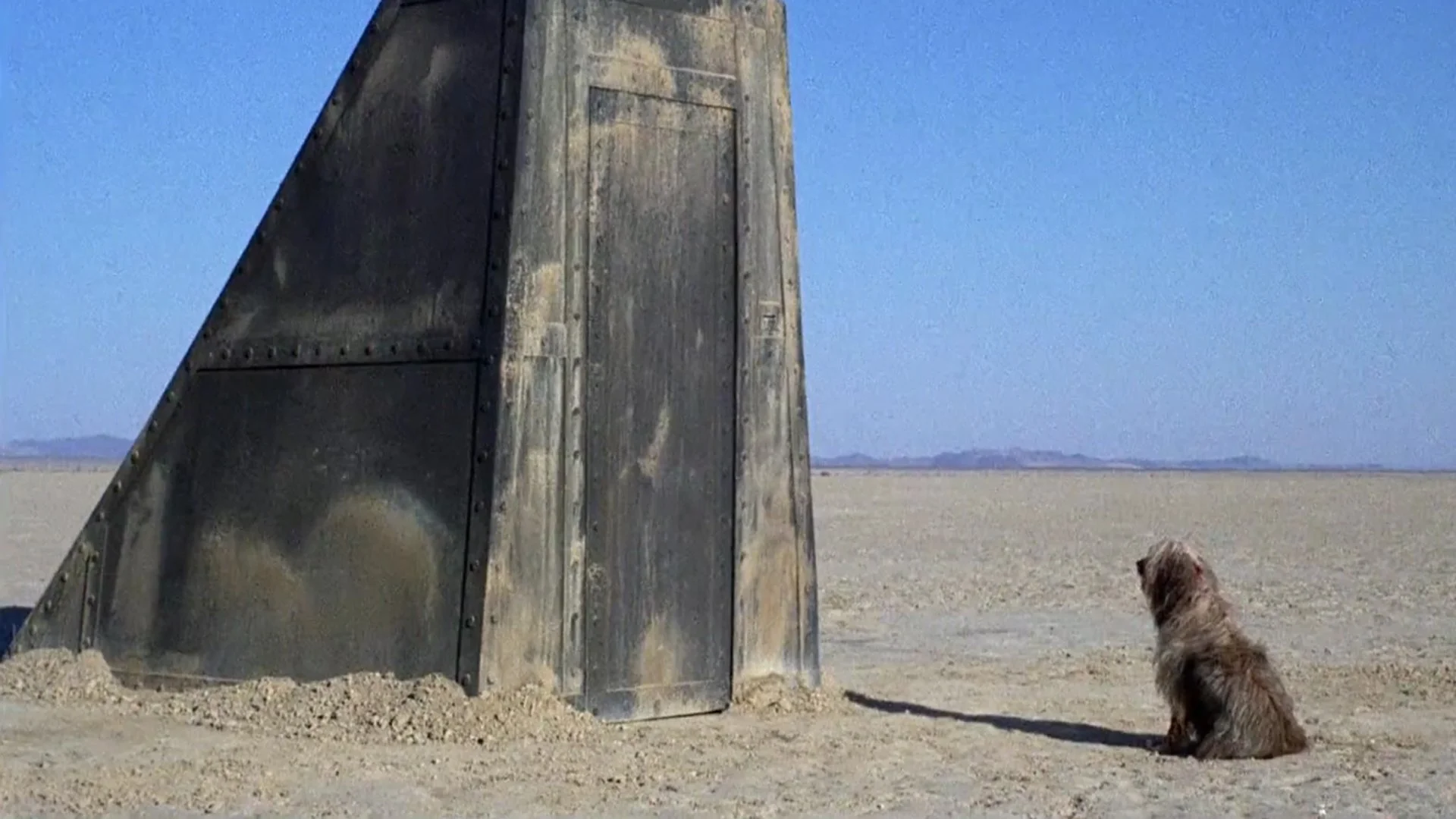In the Year 2024
Looking back at science fiction cinema set in years that have already come and gone can be quite a trip. Films that fit this category range widely in tone and present any number of possible futures. While some genre entries suggest a hopeful, enlightened future, more often they present a darker, more harrowing vision of tomorrow.
The future is now…and it’s not so great.
Well, it just so happens that there are two films set (primarily) in the year 2024. They feature one unwitting time traveler, an earth ravaged by nuclear testing and war, subterranean communities, and a human race no longer able to reproduce. And while we haven’t yet experienced a full-on nuclear war or seen our ability to procreate compromised on a mass scale, I can’t exactly say humanity has done a bang-up job. Yes, we live in an age of incredible technologic advances and sometimes project an enlightened society. Sadly, we also traffic in conspiracy theories and alternative facts, abide genocide, and continue to sink deeper into a climate crisis of our own making.
As to any prescient themes that could potentially be gleaned from the following films, I leave that for other viewers to ponder.
Now, and before we get too bleak, let’s jump into our sci-fi double feature. There’s no time like the present, which happens to be the year 2024.
First Up – 1960’s Beyond the Time Barrier
It is 1960 and U.S. Airforce test pilot Major William Allison has breached the time barrier while testing a new experimental rocket, landing him in the year 2024. Soon after this time warp, Allison discovers a futuristic city known as the Citadel standing out amongst the ruins of some earthly calamity.
No place to go but down
Radioactive dust from years of atomic testing in the midcentury caused a catastrophic degradation of the earth’s atmospheric barrier. With its protective screening destroyed, the planet’s surface was exposed to cosmic radiation that triggered a mass plague in 1971; this wiped out half the human population. While a small segment of the survivors evacuated to Mars, most moved underground. Almost all these survivors have been rendered deaf, mute, and/or sterile—the first stage of a mutation caused by the radiation.
Allison is soon captured and brought to the Citadel, which is led by a kindly older gentleman known as “The Supreme.” He is aided by his smart and super perky granddaughter and confidant Trirene (Darlene Tompkins). Trirene is deaf and mute like the others but can also read minds! She is clearly smitten by the major and the feeling seems mutual. The Supreme hangs his hopes on repopulating the species by ensuring the love connection between the two. He is clearly hanging his hopes on Trirene’s presumed fertility.
All is not well at the Citadel
While Citadelians live in relative comfort and safety, distrust and seething resentments threaten to bring it all down. A dungeon-like prison holds humans who suffered the most advanced form of mutation due to their exposure on the surface. These mutants are desperate to break out and destroy all who they blame for their plight.
Meanwhile, the inhabitants are extremely wary of the bewildered Allison, suspecting he is a spy. Most suspicious of all is the cantankerous head of security, referred to only as “The Captain” (Boyd “Red” Morgan). While the Captain has the major in his crosshairs, he is also distrustful of three others who once escaped their own times to arrive at the Citadel: The Russian Captain Markova and two scientists, Karl Kruse and Dr. Bourman. These “scapes” aid the community with their scientific and technologic know-how to maintain the solar power system. The Captain is extremely wary of the scapes for their cageyness and apparent interest in Allison as a potential collaborator.
Major Allison and the scapes discuss time travel while sizing each other up.
With the knowledge of an anthropogenic, plague-ridden future, Allison must decide whether he should trust the scapes and attempt a daring return to his own time to warn humanity in the hopes of averting the plague.
My two cents
Despite clear budgetary limitations and evidence of a very truncated filming schedule, Beyond the Time Barrier manages to be an entertaining little B movie. I always appreciate a film that jumps expeditiously into its story with a modicum of set up. If there is one major drawback for me, it is that many of performances come across as stilted, possibly due to the script and/or the acting chops of the cast. Having said that, the very modest special effects and set design are appropriate to what the filmmakers had available. For instance, Allison’s first glimpse of the Citadel is captured via a highly unconvincing yet still fun matte painting, with a pulsing light emanating from its tallest solar tower.
In terms of costume design, the Citadelian guards and other personnel are donned in vaguely militaristic, suitably utilitarian uniforms. Trirene on the other hand sports a short skirt and high heels, arguably an anachronistic look for a futuristic society but very much in line with how mid-century filmmakers often showcased their female leads. This small yet eye-rolling detail reminds us, lest we forget, that this movie was made in 1960 where filmmakers and audiences alike expected female leads to present a very specific aesthetic.
The movie was seemingly an effort to capitalize on the success of The Time Machine, a much larger, polished prestige picture from MGM that was released in August 1960. Beyond the Time Barrier was released a month or two later and when screened back-to-back with the H.G. Wells adaptation, it will inevitably come up lacking in production quality.
And speaking of production design, there are visual aspects of Beyond the Time Barrier that remind me bit of Forbidden Planet (1956), a film that is near and dear to many fans of classic science fiction. Again, a side-by-side comparison will draw greater attention to the significantly more modest design and production value of Beyond the Time Barrier. While I imagine some modern audiences may turn their noses at some its stiff performances and other production shortcomings, a simple expectation recalibration may enhance the viewing experience. As with many period pieces, meeting the film where it is may be key to enjoying it.
What’s with all the triangles?
Curiously, the production design for The Citadel includes a very consistent “triangle aesthetic” throughout. Many of the walls, mirrors, doors, are the shape of upright or inverted triangles. Even the quick scene dissolves were in the shape of triangles! This gave the film a distinct look, which I appreciated. I suspect there is a story behind this—perhaps the filmmakers were able repurpose an existing space? If anyone out there knows a bit of this production history I would love to hear it.
Anthologize it?
Considering its budgetary restraints, I can’t help but think that a further slimmed down version of Beyond the Time Barrier would have worked better as an episode of one of the TV anthologies of the period; perhaps The Twilight Zone or the longer form format of The Outer Limits? In fact, I am pretty sure if I wracked my brain a bit, I could recall episodes in either show that featured a somewhat similar premise.
How did I watch?
Blu ray Kino Lorber, part of the Edgar G. Ulmer SCI-FI Collection
Also currently streaming on Tubi
Credits (abridged)
Director – Edward G. Ulmer
Screenwriter – Arthur C. Pierce
Cinematography – Meredith M Nicholson
Production Design – Ernst Fegte
Production Company – Miller Consolidated Pictures
Distributor – American International Pictures
Cast (abridged)
Robert Clarke – Major William Allison
Darlene Tompkins – Princess Trirene
Vladimir Sokoloff – The Supreme
Stephen Bekassy – Karl Kruse
Arianne Ulmer – Captain Markova
John Van Dreelen – Dr. Bourman
Boyd "Red" Morgan – The Captain
Running Time: 1h 15m
MPA Rating G
Did you know?
Robert Clarke and Director Edgar G. Ulmer collaborated on both Beyond the Time Barrier and The Amazing Transparent Man. The two films were shot at the same location in Dallas, TX and at the same time.
Edgar Ulmer also directed the Universal horror classic The Black Cat (1934) with Bela Lugosi and Boris Karloff—a must see!
Beyond the Time Barrier was released on a double bill with The Angry Red Planet (1959).
Recommendations based on Beyond the Time Barrier
The Last Man on Earth (1964)
The Earth Dies Screaming (1964)
Children of Men (2006)
A Boy and His Dog (1975)
We open with a montage of nuclear bomb footage and a title scrawl to get us up to speed. It is now 2024 and humanity has bumbled into not one but two additional world wars. World War III featured conventional weapons and ran hot and cold for several decades. World War IV was a five-day full nuclear affair that wiped out much of life on earth, rendering it a near wasteland. A mostly barren desert that was once Phoenix is now populated by roving bands of disheveled humans that scavenge for food, water, and shelter. The rule of law and most other societal restraints seem to have fallen by the wayside, with acts of rape, theft, and murder commonplace.
I scratch your back…
Vic and Blood on the lookout for scavengers.
We are introduced to 18-year-old Vic (Don Johnson) and his fluffy yet grungy dog Blood. The two have a reciprocal partnership whereby Vic looks after Blood, finding him food and shelter, while Blood acts as a canine scout, sniffing out potential dangers. Blood also helps Vic find women to satisfy his sexual urges—consensual or not, it makes little difference to our human protagnist. Vic is no hero but more an amoral product of a brutal and regressed world. Consider that violence against women is still common in the 21st century, then imagine a world where any legal protections, however inadequate, simply no longer exist—that is the world that Vic inhabits.
And here is the kicker: Vic and Blood communicate telepathically! Blood’s part of their dialog is captured via a memorable voiceover performance by Tim McIntire, a versatile character actor, singer/songwriter, and musician. Their conversations are infused with the kind of ribbing and bickering associated with old friends or fitting the stereotype of an older married couple. Blood’s cutting wit and biting sarcasm is often directed at Vic’s boorish attitude and “one-track mind.” Old Yeller this is not!
The two carry on surviving in this wasteland, while Blood holds on to a hope that there exists a place called “Over the Hill,” purported to be a utopia with a green oasis, plenty of food, and where inhabitants can live in relative safety.
With the help of Blood’s nose, Vic eventually sets his sights on a new female by the name of Quilla June (Susanne Benton). Vic gets a lot more than he bargained for when he is eventually coaxed by Quilla June into entering a subterranean society called Topeka. Meanwhile Blood, who senses trouble “down below,” stays on the surface to fend for himself.
Folksy, Creepy
The inhabitants of Topeka have cultivated an “idyllic” pre-war, early 20th-century mid-America way of life way, replete with period dress, marching bands, and picnics. Topekans also wear white face makeup accented by ruby red lips and rosy cheeks; it’s all very weird.
The leader of this society is Lou Craddock, a folksy creep of the first magnitude played magnificently by the late great Jason Robards. Craddock is all business when it comes to administration, including plans for repopulation and the disappearing of perceived dissidents. Craddock holds court as head of “The Committee” in a replica of a church once ubiquitous before the apocalypse.
Like our previous film, the subject of procreation is a prominent theme here. Turns out many years of living underground has rendered all Topekan men sterile. The Committee therefore seeks a “new man” to impregnate their women. Enter Vic, who is pleased as punch to have been chosen to help in this effort. Meanwhile Quilla June has plans of her own about the leadership of Topeka. I do not want to give away much more, only to say that things will come to a head in more ways than one as Vic and Blood’s bond is put to the test.
As an aside, the existential threat of mankind’s inability to procreate is a theme we will encounter in several future sci-fi films, among them the excellent and brooding Children of Men (2006), wherein two decades without a birth threatens the future of society and humankind.
My two cents
A Boy and his Dog is a tightly entertaining if low budget film, with an acerbic wit and wry sense of humor. Both the top-side scenes of a desolate desert landscape and the subterranean world down below are well conceived and photographed. There are desert shots that hover so close to the ground you can almost taste the sandy grittiness of the barren scorched earth. The interiors of Topeka are often lit with florescent spotlights to illuminate its larger underground chambers, which creates an unnatural and disquieting atmosphere. Also, props to the make-up and costume design for the sweaty, tattered look of the motley topsiders vs. the buttoned-up period dress of the quasi-puritanical Topekans.
Movies of this period often imagined a future impacted by some combination of totalitarianism, nuclear war, the breakdown of civil society, ecological collapse, plague, misguided attempts at utopia, and ill-used advances in technology. This period ran roughly from the late 1960s through the mid 1970s until a little film called Star Wars (1977) changed everything. It is a rich and fascinating era of science fiction that yielded many strange and earnest films that tackled many of the anxieties of the time.
If pressed to assign a label to A Boy and His Dog—always a fraught endeavor—it would be misanthropic. This is a dark view of humanity for sure and one that fits nicely within an era of science fiction that often posited a troubled future for humankind. It is no wonder that the film drew some controversy at the time. While there is minimal graphic onscreen violence, depictions of a misogynistic world fully realized with sexual violence as routine can be rough to watch. Without giving away any details, the opening and closing sequences may disturb some audiences.
How did I watch?
Currently streaming on Prime Video
Also available on Blu-ray from Shout Factory
Cast (abridged) Don Johnson – Vic
Jason Robards – Lou Craddock
Susanne Benton – Quilla June Holmes
Tim McIntire – Blood (voice)
Helene Winston – Mez Smith
Tiger – Blood
Credits (abridged) Director – LQ Jones
Screenwriter – Harlan Ellison, LQ Jones
Cinematography – John Arthur Morrill
Music – Tim McIntire
Production Design – Ray Boyle
Running Time: 1h 30m
MPA Rating: R
Did you know?
Tim McIntire composed the music and performed the film’s catchy theme song which takes us in and out of the film. McIntire also wrote and recorded (along with John Rubinstein) the beautiful score for the western Jeremiah Johnson (1972), a personal favorite of mine.
Director LQ Jones was also a prolific character actor of TV and film. He will be recognizable to fans of westerns directed by Sam Peckinpah. He appeared in several Peckinpah classics such as Ride the High Country (1962), The Wild Bunch 1969), The Ballad of Cable Hogue (1970), and Pat Garret and Billy the Kid (1973).
The film partly inspired the Fallout video game franchise and a new Amazon series based on it.
Recommendations based on A Boy and His Dog
Logan’s Run (1976)
The Road Warrior (1981)
Other cinematic takes on future years now past
The interstellar chiller It the Terror from Beyond Space (1958) floated the idea of Earth-to-Mars travel in the not-so-distant future of 1973.
The classic Toho monster rally Destroy All Monsters (1968) saw a future that includes an island preserve of giant monsters in the year 1999—ahh if only!
John Carpenter’s Escape from New York (1981) envisioned New York City’s borough island of Manhattan as a maximum-security prison in 1997.
Death Race 2000 (1975), produced by the late b-movie legend Roger Corman, gave us a dystopian future set in the year 2000, where the populace is equal parts pacified and enthralled by the Transcontinental Road Race, a sport whereby participants rack up points by running down civilians.
Soylent Green (1973) envisioned 2022 to be a time when unchecked corporate power and ecological collapse on earth reduces the majority of humanity to an enfeebled mass.
More recently Bong Joon Ho’s dystopia on rails epic Snowpiercer (2013) takes place in the year 2031, just a tad ahead of where we are right now. Here we see a class-based society of haves and have nots existing on a train that circumnavigates an earth that is frozen over because of a failed attempt to solve climate change.
Parting Thoughts
Consider the zeitgeist of their respective periods in which these films were released. I wonder if audiences in 1960 vs. 1975 would have reacted very differently to the premise of a future where humanity’s ability to propagate the species is threatened? Would movie goers in 1960, when a mid-20th century sense of optimism and confidence in humanity still predominates, see an inability to procreate as an incalculable tragedy? Conversely, considering the generally more pessimistic tone of views of the decade, would 1975 audiences ponder this premise with more ambivalence, and perhaps conclude “maybe that’s not the worst thing?”
Next Up—we sink our teeth into a uniquely suburban take on vampires, straight out of the 1980s!


